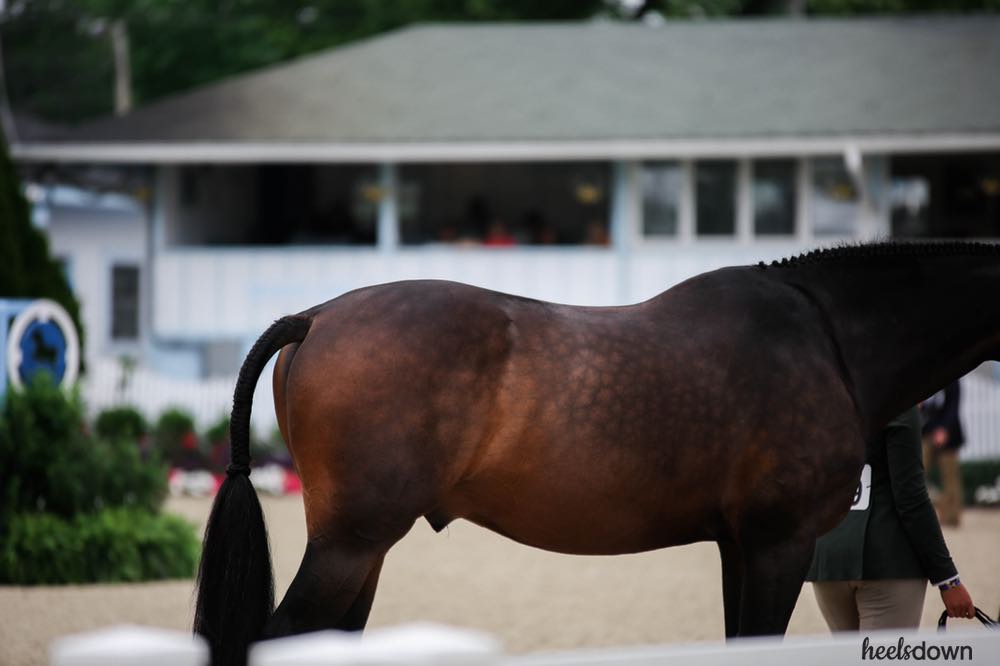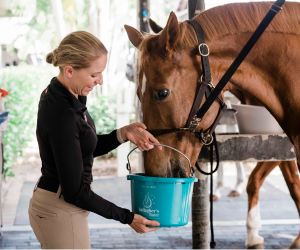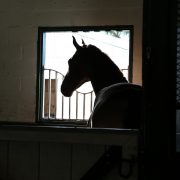Kissing Spines Is Not a One-Shot Diagnosis

In the first of this two-part series about kissing spines, Dr. Kenneth Marcella, owner of the KLM Equine practice in Canton, Ga., explains why diagnosing kissing spines isn’t always as simple as an X-ray.
A horse with a reputation of being a reliable jumper starts refusing. A dressage horse suddenly becomes reluctant to engage his hind end. A schoolmaster starts bucking, rearing, and planting his feet.
Plenty of ailments can cause behaviors like these – sore feet, painful joints, or poor saddle fit, to name a few. But an increasingly common diagnosis is being made when it comes to back pain: kissing spines.
Kissing spines, or Overriding Dorsal Spinous Processes (ORDSP), often causes back pain that in turn, manifests in poor performance for the horse. In horses with kissing spines, the spinous processes (sections of bone attached to the vertebrae) are too close together and may impinge on each other, causing pain. This can happen in one location, or multiple locations, on the horse’s back. Think of the horse’s spine as an accordion – when the parts get pushed too close together, it can cause intense pain.
“The most common site of this problem on the horse is located toward the back of the rider’s saddle. This is where the angle of the dorsal spinous processes anatomically changes direction, so there’s more chance for problems,” explains Dr. Kenneth Marcella, an equine veterinarian who owns KLM Equine and has been practicing equine veterinary medicine for 35 years.
Rooting Out The Cause
Not all back soreness is caused by kissing spines, and perhaps more importantly, not every case of kissing spines causes pain in the horse. Dr. Marcella explains that there is cause for concern when horses with no clinical symptoms are labeled as “kissing spines horses”.
“Nowhere else in veterinary medicine would anyone think of making a diagnosis based on one radiographic view of a body part,” he said. “If you look at a fetlock or anything else, the standard is four views, AP (anteroposterior, or front-to-back), lateral and both obliques. Since we can’t take anything else of the back, we take a lot of lateral views, and we’re making a lot of statements about potential suitability and problems with horses based on one view.”
Modern digital radiography made it easy and fast to look at the horse’s skeletal system – all it takes is a click of a button. This is a positive advancement, but Dr. Marcella warns against getting carried away by what you see in the images.
“Overall, we’re taking a lot more (radiographs), which is the good side of things. The bad side of things is you have to be sure your information has some relevance to what’s going on with the horse. Just because we have more information, doesn’t mean the conclusions we’re drawing from it are always correct.”
“Nowhere else in veterinary medicine would anyone think of making a diagnosis based on one radiographic view of a body part.”
A 2011 study conducted by Dr. Tracy Turner, an equine veterinarian, researcher and board certified surgeon, showed that while 39 percent of horses have radiographic evidence of kissing spines, a much smaller percentage exhibited clinical symptoms. Therefore, determining that a horse needs treatment or suggesting that it may not be suitable for a certain discipline from one X-ray view, “I think is unfair,” said Dr. Marcella.
“Look at navicular films, for instance. We used to have tons of horses that we’d see changes on the navicular films and the horse had a little stabby gate and, bingo! He’s a navicular horse. Now with MRI, we know that large percentages of those horses have nothing wrong with the navicular bone – they have problems with the soft tissue in the foot. We will probably find a good bit of this with horses in the back once we have the ability to MRI the back.”
There are many other structures in the back that can cause pain, so even pain combined with radiographic evidence doesn’t mean the bones are the source of the problem.
“There are multiple ligaments in each spinal space,” he said. “You have the transverse spinal ligament, tons of soft tissue structures in there that can be the source of the problem, but right now we don’t have a good way to see all of that.”
Multiple Methods
To combat over-diagnosis or over-treatment, radiographic evidence should not be the only method of diagnosing kissing spines. Thermography, ultrasound, digital palpation, and nerve blocks are other diagnostic modalities that should be combined to determine a diagnosis.
“Multiple modalities seem to be the best. It’s more points on the data line,” he explained. “You can usually rule out muscle and ligament based on how the horse responds to specific therapies like muscle relaxers, massage, surpass cream, anti-inflammatories. If you’re not getting response with that and good rest and riding, then you’re more likely to say, ‘maybe we have something structural.’”
In the diagnostic phase, the veterinarian should also consider how the horse behaves under saddle versus without a rider. This can help determine whether saddle fit or rider weight is contributing to the horse’s discomfort.
“Most of the time if these horses are bad enough with kissing spines, a rider can no longer get the riding done and the symptoms are showing up without a rider. If it’s just with a rider on their backs, I’m a little more concerned about a positioning/pressure issue something of that nature. With a true kissing spines horse, they’re going to show you they’re in pain any time they get into motion.”


